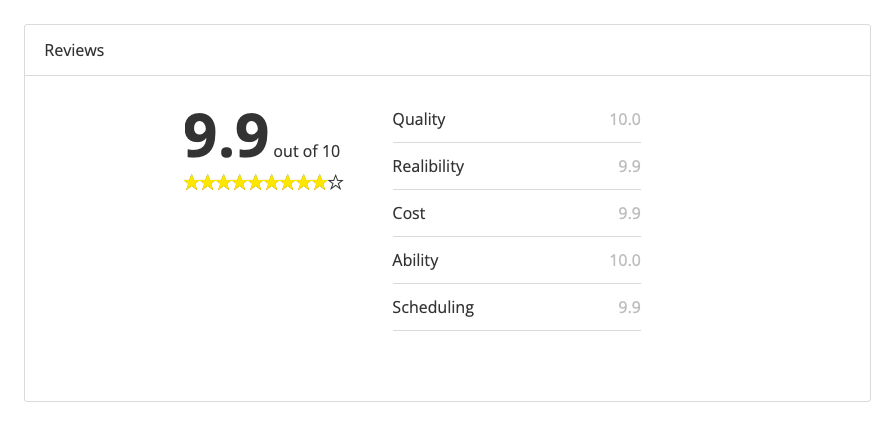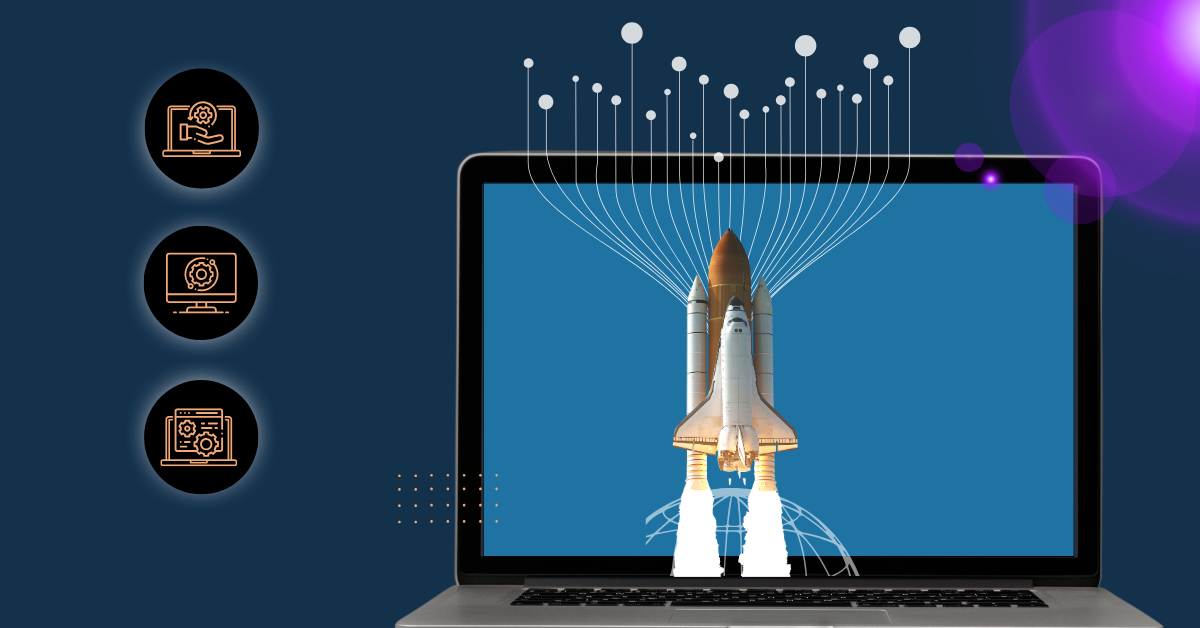
How to Develop a Successful Mobile App: Key Steps and Best Practices
Have you ever wondered what makes a mobile app successful in today’s competitive market? Why do some apps gain millions of users and generate significant revenue, while others struggle to make an impact? The answers to these questions lie in a complex mix of strategy, technology, and execution. Developing a successful mobile app involves more than just having a great idea—it requires a thorough understanding of the market, a solid development plan, and the right set of tools and practices. In this guide, we will explore the essential steps and best practices that can help turn your app idea into a market success. From market research and goal setting to design, development, and post-launch strategies, we’ll cover all the crucial elements needed to create a mobile app that not only meets user needs but also stands out in a crowded marketplace.
1. Understanding the Market and Defining the App’s Purpose
Before diving into development, it’s crucial to understand the market landscape and define the purpose of your mobile app. This involves comprehensive market research, including:
- Identifying Target Audience: Understand who will be using the app. Consider demographics, preferences, pain points, and behaviors.
- Analyzing Competitors: Examine existing apps in your niche. What are their strengths and weaknesses? What gaps can your app fill?
- Defining Unique Selling Proposition (USP): Determine what makes your app unique. This could be a specific feature, design, or user experience that differentiates it from competitors.
| > 2.87 million (59.4%) | > 1.96 million (40.6%) |
| Popular Categories: | Popular Categories: |
| Games 13.3% | Games 21.1% |
| Business 9.0% | Business 10.1% |
| Education 8.5% | Education 8.2% |
| Lifestyle 7.8% | Lifestyle 8.4% |
| Entertainment 6.0% | Entertainment 6.8% |
| Health & Fitness 5.7% | Health & Fitness 4.4% |
| Tools 7.2% | Tools 3.4% |
| Finance 5.4% | Finance 4.0% |
To succeed in this competitive environment, having a clear understanding of your app’s purpose and market fit is vital.
2. Crafting a Detailed Plan and Setting Goals

Once the initial market analysis is complete, the next step is to craft a detailed development plan. This includes:
- Setting SMART Goals: Specific, Measurable, Achievable, Relevant, and Time-bound goals help guide the development process.
- Defining Key Features and Functionalities: Prioritize features based on user needs and app objectives. Start with a Minimum Viable Product (MVP) to test the waters before adding more complex functionalities.
- Budgeting and Resource Allocation: Determine the financial investment required, including costs for design, development, testing, and marketing. Also, decide whether you will use an in-house team or outsource development.
Renowned IT expert, Steve Wozniak, co-founder of Apple Inc., once said, “A great product starts with a great idea, but success requires a well-thought-out plan.” This statement underscores the importance of detailed planning in app development.
3. Choosing the Right Technology Stack
Selecting the right technology stack is critical to the app’s success. The choice depends on several factors:
- Platform (iOS, Android, or Both): Decide whether to develop a native app (specific to one platform) or a cross-platform app (compatible with multiple platforms). Native apps often provide a better user experience but require more resources.
- Programming Languages: Swift and Objective-C are popular for iOS apps, while Java and Kotlin are standard for Android. For cross-platform apps, React Native and Flutter are common choices.
- Backend Technology: Choose a robust backend solution to manage the app’s data, users, and services. Node.js, Django, and Ruby on Rails are popular choices.
- Third-party Integrations and APIs: Determine which third-party services (e.g., payment gateways, social media logins) are essential for your app.

A study by Stack Overflow revealed that JavaScript, HTML/CSS, and SQL are among the most commonly used programming languages in 2023. Understanding the technology landscape helps in making informed decisions during development.
4. Designing an Intuitive User Interface (UI) and User Experience (UX)
The design phase is where the app’s visual elements and user experience come to life. A well-designed app is not only aesthetically pleasing but also easy to navigate. Key considerations include:
- User-Centered Design: Focus on the end-user. Use personas and user journey maps to design an intuitive flow.
- Wireframes and Prototypes: Create wireframes to outline the app’s layout and prototypes for user testing and feedback.
- UI/UX Principles: Follow established UI/UX principles, such as simplicity, consistency, and accessibility. Use engaging visuals and animations judiciously.
According to a report by Adobe, 38% of users will stop engaging with a website or app if the content or layout is unattractive. Therefore, investing in quality design is not just about aesthetics but also about retaining users.
5. Development Phase: Frontend and Backend
The development phase involves turning designs into a functional app. This phase can be divided into two main parts:
- Frontend Development: Focus on the client side of the app, ensuring a seamless and responsive user interface. This involves coding with languages like Swift, Kotlin, or JavaScript, depending on the platform.
- Backend Development: Develop the server-side logic, which includes databases, servers, and application programming interfaces (APIs). The backend is responsible for data storage, business logic, and security.
Use Agile methodologies like Scrum or Kanban to manage the development process efficiently. Agile promotes iterative development, allowing teams to adapt to changes and deliver incremental updates.
6. Rigorous Testing and Quality Assurance (QA)
Testing is a critical phase that ensures the app’s quality and functionality. The testing process should cover:
- Unit Testing: Test individual components for functionality.
- Integration Testing: Ensure different components work together seamlessly.
- User Acceptance Testing (UAT): Conduct testing with real users to gather feedback and identify any issues.
- Performance Testing: Test the app’s performance under different conditions, such as heavy load or poor network connectivity.
- Security Testing: Ensure the app is secure from potential threats.
According to a report by IBM, the cost of fixing a bug discovered after product release is 4-5 times higher than fixing one identified during the design phase and up to 100 times more than one identified in the maintenance phase. Hence, rigorous testing is crucial.
7. Preparing for Launch: Marketing and Deployment
Once the app is ready, the next step is to plan for its launch. A successful launch strategy includes:
- Pre-Launch Marketing: Generate buzz through social media, press releases, and email campaigns.
- App Store Optimization (ASO): Optimize the app store listing with relevant keywords, compelling descriptions, and high-quality visuals.
- Beta Testing: Release a beta version to a limited audience to gather feedback and make final adjustments.
- Launch: Deploy the app on the desired platforms. Ensure all necessary permissions and compliance requirements are met.
A study by Sensor Tower found that 70% of mobile app downloads come from app store searches. Hence, optimizing your app store presence is vital for visibility and downloads.
8. Post-Launch: Monitoring and Updates
The journey doesn’t end at launch. Continuous monitoring and updates are essential to maintain user engagement and app performance. Key post-launch activities include:
- Monitoring Performance: Use analytics tools to monitor user behavior, app crashes, and performance metrics.
- Gathering Feedback: Actively seek user feedback through reviews, surveys, and in-app feedback forms.

- Regular Updates: Release regular updates to fix bugs, improve features, and introduce new functionalities.
As Jeff Bezos, CEO of Amazon, once said, “Your brand is what people say about you when you’re not in the room.” Regular updates and user engagement ensure a positive brand image.
9. Legal and Compliance Considerations
In today’s regulatory environment, compliance with legal standards is non-negotiable. Considerations include:
- Data Privacy Laws: Ensure compliance with GDPR, CCPA, or other regional data privacy laws.
- Intellectual Property Rights: Protect your app’s intellectual property by registering trademarks, copyrights, or patents.
- Terms and Conditions: Draft comprehensive terms and conditions, privacy policies, and user agreements.
Failure to comply with legal standards can result in fines, lawsuits, or even app removal from stores. According to a study by Ponemon Institute, the average cost of a data breach in 2023 was $4.35 million, emphasizing the importance of data security.
10. Future Trends in Mobile App Development
The mobile app industry is ever-evolving, with new technologies and trends shaping the future. Key trends to watch include:
- Artificial Intelligence (AI) and Machine Learning (ML): Apps are increasingly integrating AI/ML for personalized user experiences.
- Augmented Reality (AR) and Virtual Reality (VR): AR and VR technologies are enhancing user engagement in gaming, retail, and education apps.
- 5G Technology: The rollout of 5G is set to revolutionize app performance, enabling faster speeds and better connectivity.
- Internet of Things (IoT): IoT integration is expanding the functionality of mobile apps, particularly in smart home and healthcare sectors.
Future Trends in Mobile App Development
| Trend | Projected Growth by 2025 | Benefits |
| AI/ML | 45% | Personalization, automation |
| AR/VR | 30% | Enhanced user engagement |
| 5G | 60% | Faster speeds and improved connectivity |
A report by Gartner predicts that by 2025, 75% of all enterprise-generated data will be created and processed outside a traditional centralized data center or cloud, driving the need for edge computing in mobile app development.
***
Developing a successful mobile app is not a simple task; it requires a blend of strategic planning, technical expertise, and continuous innovation. By following the key steps and best practices outlined in this article, businesses can navigate the complexities of mobile app development and create products that resonate with users and achieve sustained success in a competitive market. At Amiscon, we specialize in delivering innovative mobile solutions that are tailored to your business needs, combining advanced AI, machine learning, computer vision, and blockchain technologies. Our expertise extends beyond development; we build the future of IT products in HR Tech and Sport Tech, guiding innovative startups to become industry leaders. Partner with Amiscon to transform your mobile app vision into a reality, leveraging our cutting-edge technologies and expert development to secure your success in the ever-evolving digital landscape.





Leave a Reply